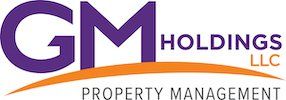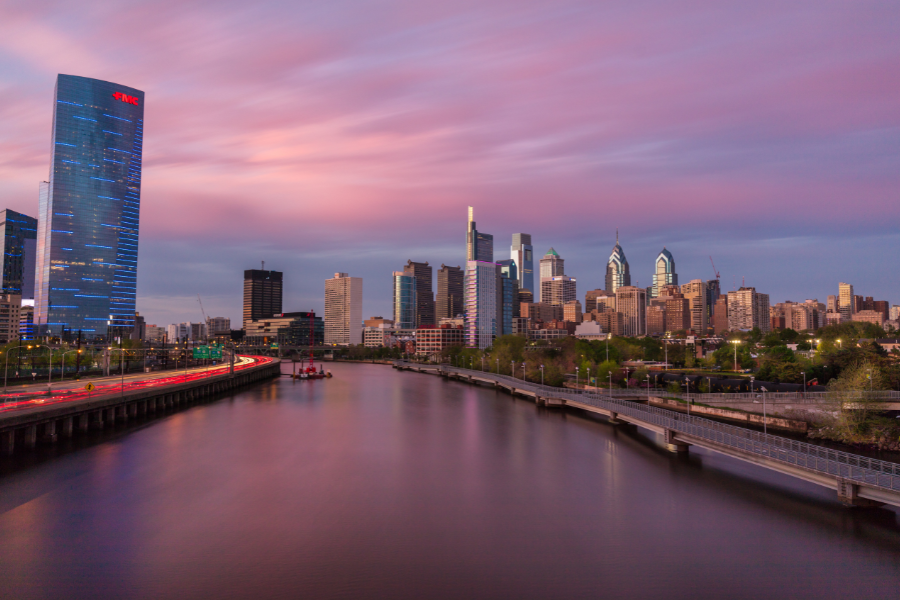10 Underrated Sights To See In Center City
Billy Penn. City Hall. The Comcast Center. The Rocky Statue. At this point, you’ve probably seen enough shots, local news reports, and travel ad B-roll to recognize all these landmarks as iconographic staples of Center City.
But with 10-13 blocks a mile and 2,575 miles of streets, Philadelphia is far more than the typical quintessential monuments. Whether you’re just a tourist or soon-to-be resident, GM Holdings wants to help you find some of the City of Brotherly Love’s overlooked gems that could use more love.
1. Jefferson St. Ballpark
Located around 25th and 27th St., this field holds a short but storied legacy as a home to a Civil War campground, the Philadelphia Athletics, the world’s first Major League baseball game, as well as the world’s first interracial baseball game.
Today, the main site is now home to a high school, but you can still visit an Athletic Recreation Center, numerous ball fields around the area, as well as a historical marker commemorating the original park’s historic milestones.
2. Philly Mini-Golf
Center City’s first (and only) mini-golf course in Franklin Square is an 18 hole love letter to the city itself, with miniaturized recreations of notable monuments like the Liberty Bell and the Ben Franklin Bridge.
3. Wagner Free Institute For Science
If you want to an edutainment fix but don’t want to cough up your wallet at the Franklin Institute, this science museum at 1700 West Montgomery is worth a look. One of the world’s few surviving Victorian-era science buildings, Wagner is dedicated to offering free museum tours and public education in natural history and the sciences.
4. Mutter Museum
If you aren’t afraid of gently brushing against your own mortality, this macabre collection of medical exhibitions might be perfect for you. Since 1858, the Mutter Museum has housed to over 20,000 specimens of preserved skeletons, organs, growths, wax replicas, and every conceivable morbid human remains under the sun.
Some of the more famous faces (or organs) on display include exclusive slides of Einstein’s brain, tissue removed from John Wilkes Booth, and two anonymous donated jars filled with human skin. You read that right.
5. The President’s House
When you’re listing off overlooked places in a city, one that formerly housed two leaders of the free world might not exactly be the first thing that comes to mind. When that city is the epicenter of a revolution, the nation’s first capital, and bleeding historical milestones though, sometimes it’s easy to miss the President’s House.
Located at 524-30 Market St., the house was the first executive Mansion, housing George Washington and John Adams from 1790 to 1800. Since 2010, the remnants have been preserved as an open-air memorial, a raw, honest portrait of the duality between liberty and enslavement; displays at the site explore Washington’s life, the lives of the nine African American slaves in his household, and slavery’s presence in American history.
6. Serabol Center City
Cheesesteaks, crab fries, water ice, and soft pretzels have their undeniable merits, don’t get us wrong. You’d be crazy to ignore them as Philly staples, but you’d be crazy to deny the rest of the options the city has to offer.
Originally in Olney, chef Chris Cho decided to bring his family business up near Broad Street. Pay a visit and come try the finest Korean BBQ menu in Center City.
7. Thaddeus Kosciuszko National Memorial
The smallest unit of the National Park System is preserved in honor of a major international war hero and civil right activist. In 1776, Thaddeus Kosciuszko sailed from Poland to selflessly fight for the American Revolution and returned there in 1784 to aid the Polish-Lithuanian Army’s cause against Russia.
Kosciuszko’s American estate is preserved at 301 Pine Street to this day, and on weekend afternoons from April-October, you can visit the house to learn more about his legacy and witness a piece of Revolutionary history, free of charge.
8. Elfreth’s Alley
America’s oldest residential street is now a tremendous hub of historical reenactments and holiday events for Christmas, Oktoberfest, Fourth Of July, and Halloween. For more info, visit http://www.elfrethsalley.org/events/ .
9. Science History Institute
Visit 315 Chestnut Street to implore an epicenter of scientific research, fellowships, free public museum exhibitions, and an overwhelming public library spanning over seven centuries of scientific studies.
10. Cave Of Kelpius
Located just outside Center City near Wissahickon Creek, this cave housed the nation’s first known doomsday cult, where 40 Pietist monks (led by German mystic Johannes Kelpius) awaited the Biblical Second Coming in 1694. Even though the Apocalypse didn’t exactly pan out as expected, Kelpius and his followers largely stuck together until his death in 1708, peacefully creating art, music, and helping out the Wissahickon community.
Today, almost zero traces of the cult survive, apart from a preserved road known as Hermit Lane, but the cave site itself is now part of the majestic, 1800 acre Wissahickon Valley Park Trail. If you want to go for a quality free hike along a beautiful trail and mysterious cave, you won’t regret swinging by Wissahickon.





